

Grand Ole Opry
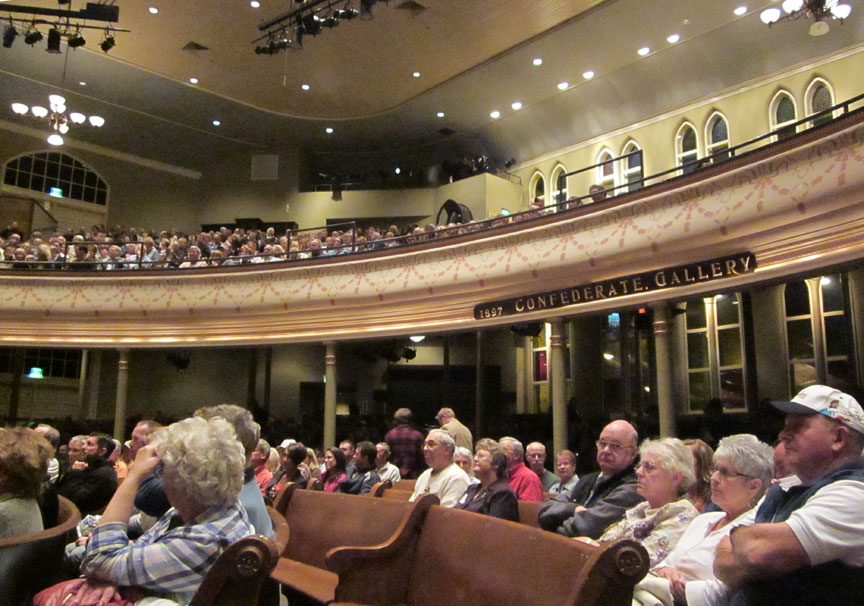
in Ryman auditorium waiting for the WSM radio hour
The Grand Ole Opry is a weekly country music stage concert in Nashville, Tennessee, that has presented the biggest stars of that genre since 1925. It is also among the longest-running broadcasts in history since its beginnings as a one-hour radio "barn dance" on WSM-AM. Dedicated to honoring country music and its history, the Opry showcases a mix of legends and contemporary chart-toppers performing country, bluegrass, folk, gospel, and comedic performances and skits. Considered an American icon, it attracts hundreds of thousands of visitors from around the world and millions of radio and internet listeners. The Opry, today part of the American landscape, is "the show that made country music famous" and has been called the "home of American music" and "country’s most famous stage."
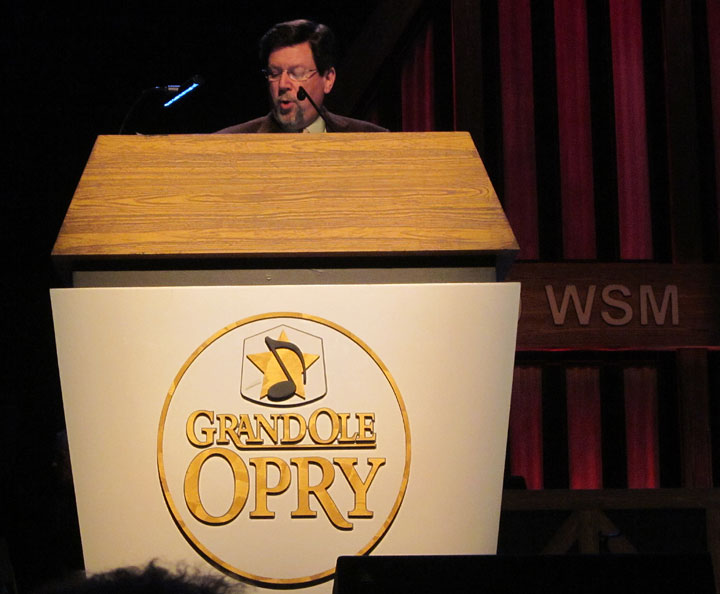
Grand Ole Opry on WSM
In the 1930s, the show began hiring professionals and expanded to four hours; and WSM-AM, broadcasting by then with 50,000 watts, made the program a Saturday night musical tradition in nearly 30 states. In 1939, it debuted nationally on NBC Radio. The Opry moved to a permanent home, the Ryman Auditorium, in 1943. As it developed in importance, so did the city of Nashville, which became America's "country music capital".
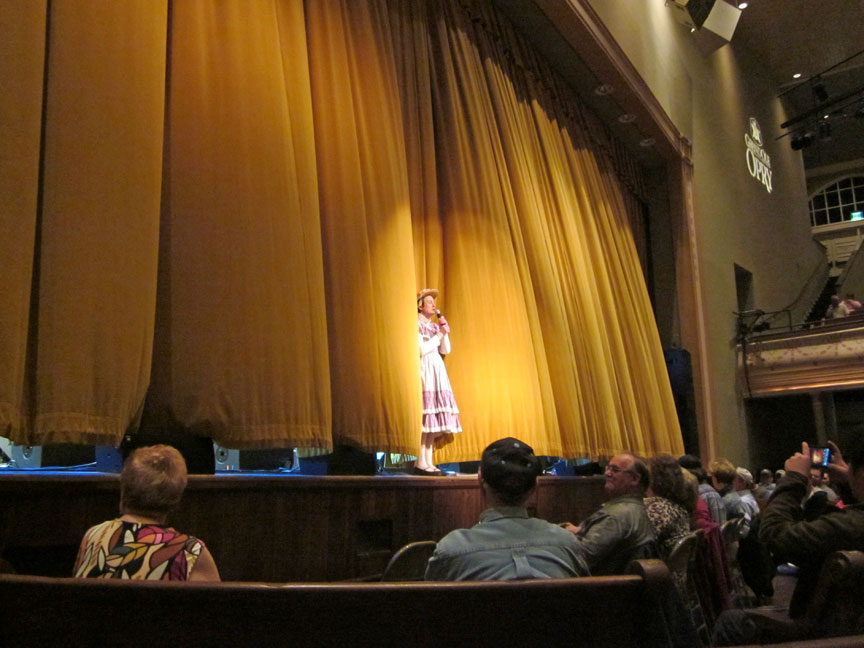
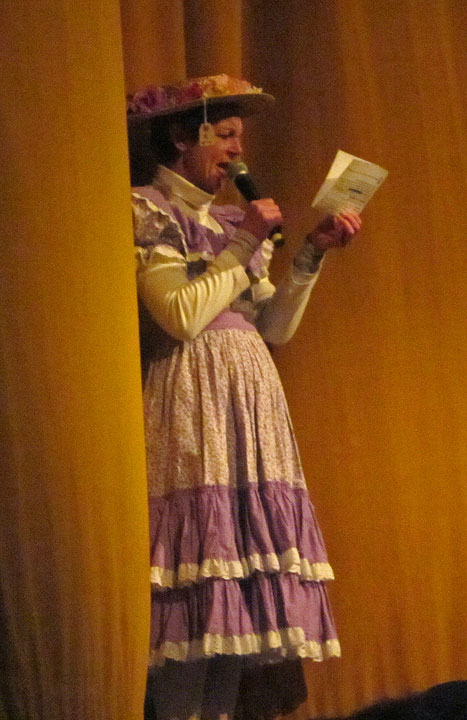
Millie Pearl impersonator opens
Membership in the Opry remains one of country music's crowning achievements. Such country music legends as Hank Williams, Patsy Cline, Roy Acuff, the Carter family, Bill Monroe, Ernest Tubb, Kitty Wells and Minnie Pearl became regulars on the Opry's stage (although Williams was banned in 1952 due to frequent drunkenness). In recent decades, the Opry has hosted such contemporary country stars as Dolly Parton, Garth Brooks, Reba McEntire, Carrie Underwood, Brad Paisley, and the Dixie Chicks (both with their initial bluegrass/cowgirl lineup and their most recent alternative country trio). Since 1974, the show has been broadcast from the Grand Ole Opry House east of downtown Nashville and performances have been sporadically televised in addition to the radio programs.
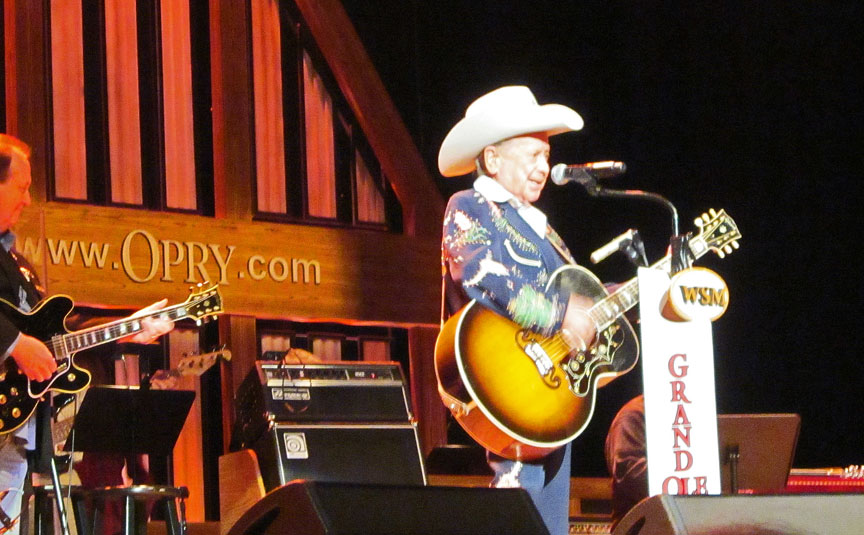
Jimmy Dickens, the first host
Little Jimmy Dickens, now the
oldest, at Opry House.
The Grand Ole Opry started as the WSM Barn Dance in the new fifth-floor radio
studio of the National Life & Accident Insurance Company in downtown Nashville
on November 28, 1925. On October 18, 1925, management began a program featuring
"Dr. Humphrey Bate and his string quartet of old-time musicians." On November 2,
WSM hired long-time announcer and program director George D. "Judge" Hay, an
enterprising pioneer from the National Barn Dance program at WLS-AM in Chicago,
who was also named the most popular radio announcer in America as a result of
his radio work with both WLS and WMC-AM in Memphis, Tennessee. Hay launched the
WSM Barn Dance with 77-year-old fiddler Uncle Jimmy Thompson on November 28,
1925, which is celebrated as the birth date of the Grand Ole Opry.
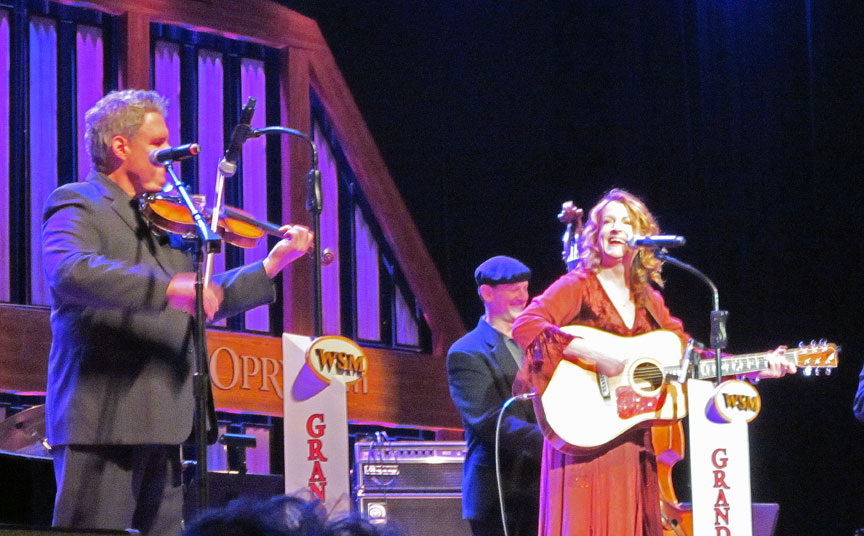
Claire Lynch
Some of the bands regularly on the show during its early days included the Possum Hunters (with Dr. Humphrey Bate), the Fruit Jar Drinkers, the Crook Brothers, the Binkley Brothers' Dixie Clodhoppers, Uncle Dave Macon, Sid Harkreader, Deford Bailey, Fiddlin' Arthur Smith, and the Gully Jumpers.
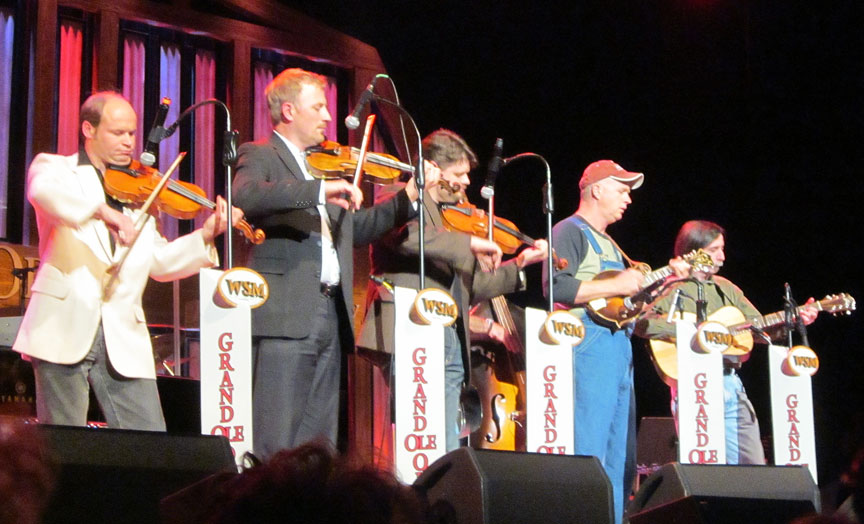
Mike Snider, as host
Judge Hay, however, liked the Fruit Jar Drinkers and asked them to appear last on each show because he wanted to always close each segment with "red hot fiddle playing." They were the second band accepted on Barn Dance, with the Crook Brothers being the first. When the Opry began having square dancers on the show, the Fruit Jar Drinkers always played for them. In 1926, Uncle Dave Macon, a Tennessee banjo player who had recorded several songs and toured the vaudeville circuit, became its first real star.
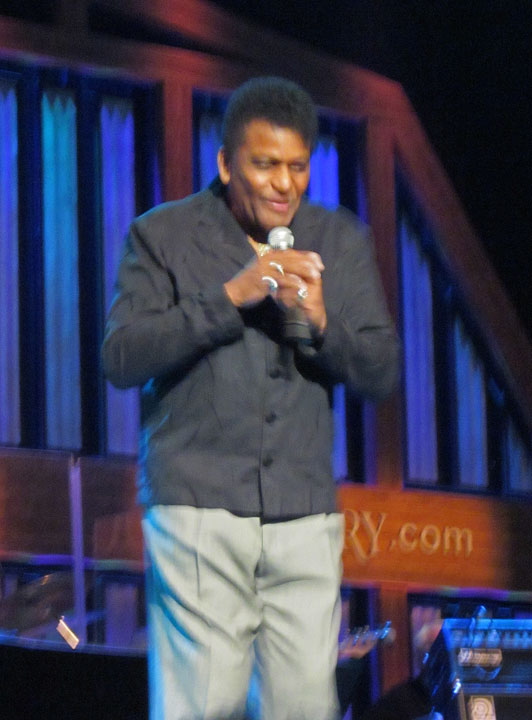
Charley Pride
On December 10, 1927 the phrase 'Grand Ole Opry' was first uttered on-air. That night Barn Dance followed the NBC Red Network's Music Appreciation Hour, which consisted of classical music and selections from the Grand Opera genre with Walter Damrosch as emcee. That night Damrosch remarked that “there is no place in the classics for realism,” In response Hay said
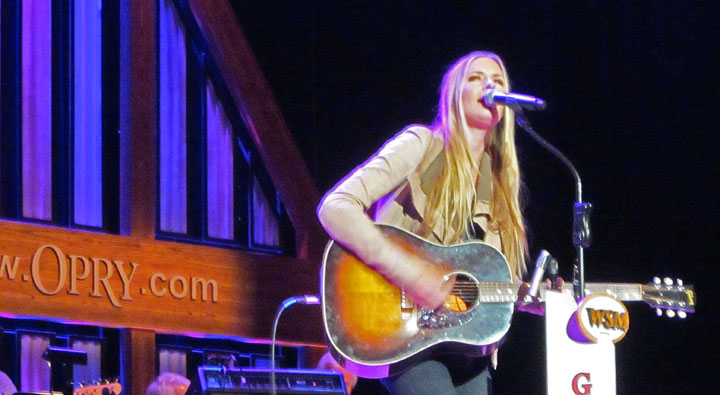
Holly Williams
"Friends, the program which just came to a close was devoted to the classics. Doctor Damrosch told us that there is no place in the classics for realism. However, from here on out for the next three hours, we will present nothing but realism. It will be down to earth for the 'earthy'."
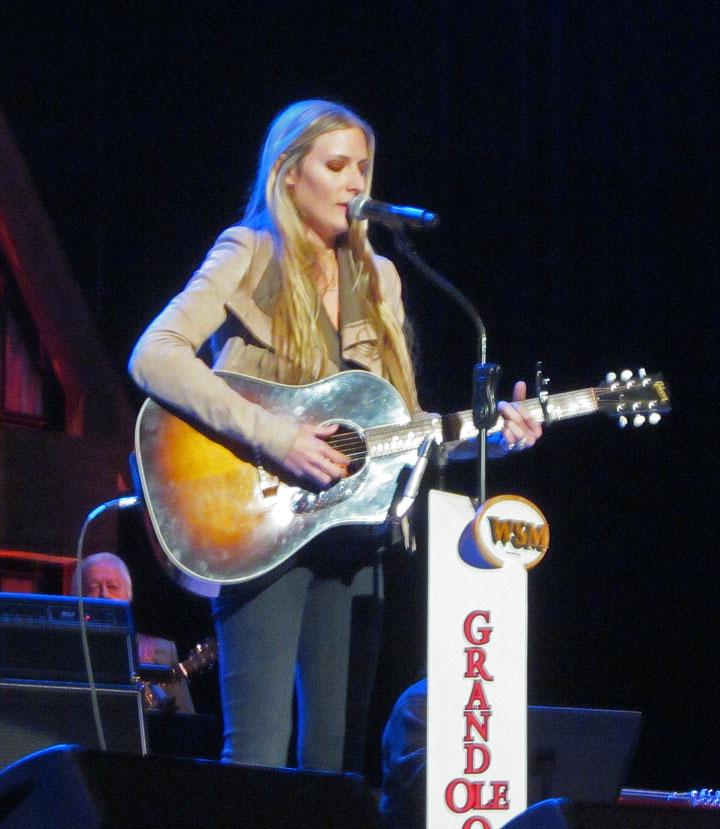
"For the past hour, we have been listening to music taken largely from Grand
Opera. From now on, we will present the 'Grand Ole Opry'."
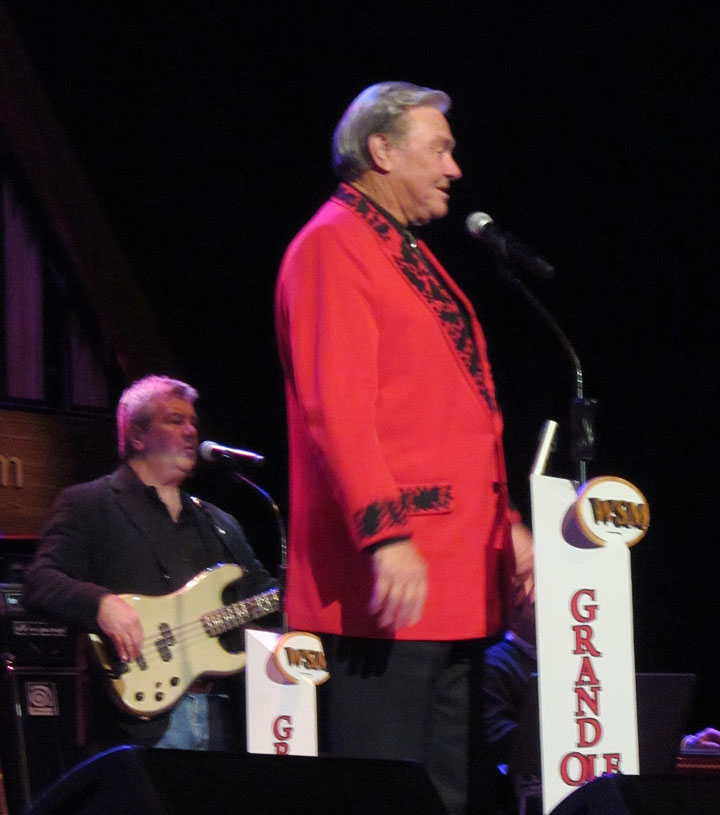
Jin Ed Brown
Bailey then stepped up to the mike to play "The Pan American Blues", his song inspired by the Pan American, a L&N Railroad express/passenger train.
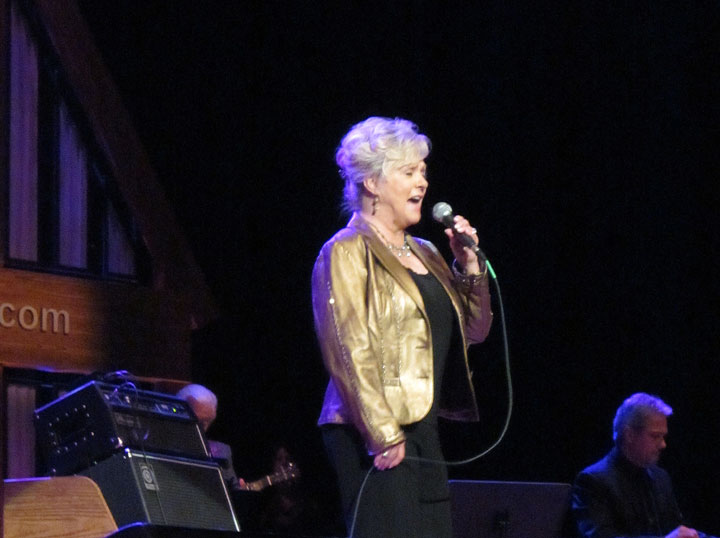
Connie Smith
As audiences for the live show increased, National Life & Accident Insurance's radio venue became too small to accommodate the hordes of fans. They built a larger studio, but it was still not large enough. After several months with no audiences, National Life decided to allow the show to move outside its home offices. In October, 1934, the Opry moved into then-suburban Hillsboro Theatre (now the Belcourt); and then on June 13, 1936, to the Dixie Tabernacle in East Nashville. The Opry then moved to the War Memorial Auditorium, a downtown venue adjacent to the State Capitol. A 25-cent admission was charged in an effort to curb the large crowds, but to no avail. On June 5, 1943, the Opry moved to the Ryman Auditorium.
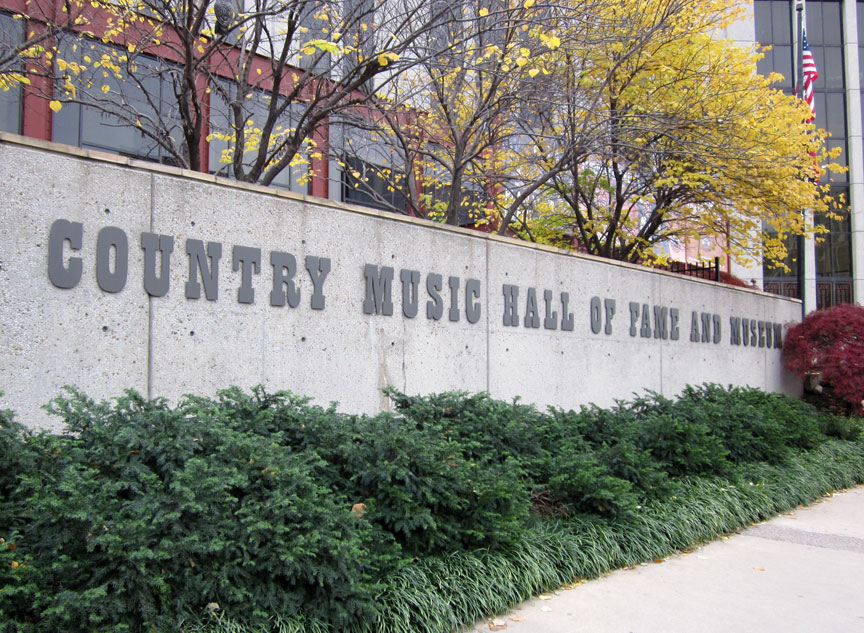
Country Music Hall of Fame
Top-charting country music acts performed there during the Ryman years, including Roy Acuff, called the King of Country Music, Hank Williams, Webb Pierce, Faron Young, Martha Carson, Lefty Frizzell, and many others.
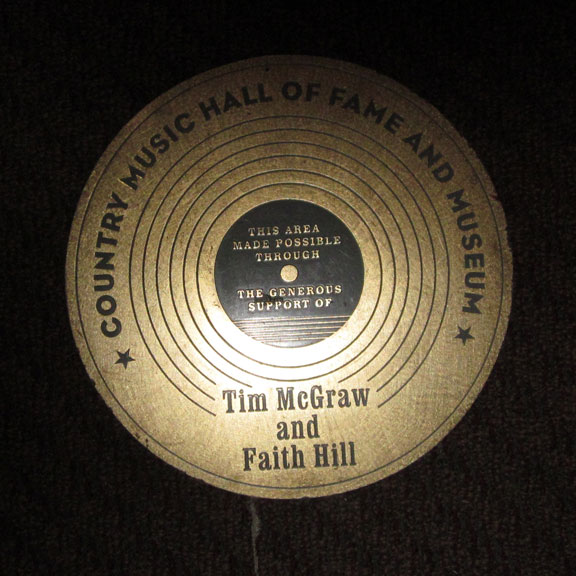
One hour of the Opry was nationally-broadcast by the NBC Red Network from 1939
to 1956; for much of its run, it aired one hour after the program that had
inspired it, National Barn Dance. The NBC segment, originally known by the name
of its sponsor, The Prince Albert Show, was first hosted by Acuff, who was
succeeded by Red Foley from 1946 to 1954. From October 15, 1955 to September
1956, ABC-TV aired a live, hour-long television version once a month on Saturday
nights (sponsored by Ralston-Purina), pre-empting one hour of the then-90-minute
Ozark Jubilee. From 1955–57, Al Gannaway produced both The Country Show and
Stars of the Grand Ole Opry, filmed programs syndicated by Flamingo Films.
On October 2, 1954, a teenage Elvis Presley made his only Opry performance.
Although the audience reacted politely to his revolutionary brand of rockabilly
music, after the show he was told by Opry manager Jim Denny that he ought to
return to Memphis to resume his truck-driving career, prompting him to swear
never to return. In an era when the Grand Ole Opry represented solely country
music, audiences did not accept Elvis on the Opry because of his infusion of
rhythm and blues as well as his infamous body gyrations, which many viewed as
vulgar. In the 1990s, Garth Brooks was made a member of the Opry and was
credited with selling more records than any other singer since Presley. Brooks
commented that one of the best parts of playing on the Opry was that he appeared
on the same stage as Presley.

Chet Atkins
In the 1960s, as the hippie counterculture movement spread, the Opry maintained a straight-laced, conservative image with "longhairs" not being featured on the show. The Byrds were a notable exception. Country-rock pioneer Gram Parsons, who at that time was a member of The Byrds, was in Nashville to work on the band's country-rock album, Sweetheart of the Rodeo. The band's record label, Columbia Records, had arranged for The Byrds to be allowed to perform at the Ryman on March 15, 1968, a prospect that thrilled Parsons. However, when the band took the stage the audience's response was immediately hostile, resulting in derisive heckling, booing and mocking calls of "tweet, tweet." The Byrds further outraged the Opry establishment by breaking with accepted protocol when they performed Parsons' song "Hickory Wind" instead of the Merle Haggard song "Life in Prison", as had been announced by compare Tompall Glaser.
The Ryman was home to the Opry until 1974, when the show moved to the 4,400-seat
Grand Ole Opry House, located nine miles east of downtown Nashville on a new
site that was part of the Opryland USA theme park. Opening night, March 16, was
attended by President Nixon, who played a few songs on the piano. When the new
Opry opened, a large circle of wood was cut from the original stage at the Ryman
and inlaid into the stage at the new venue.
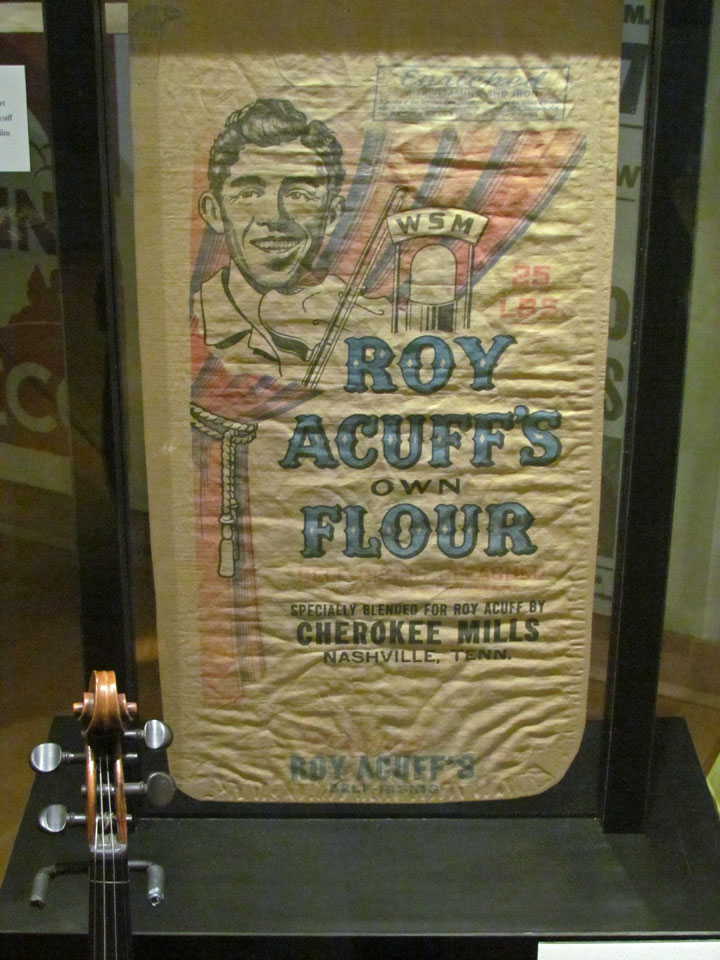
While the theme park was closed in 1997 and replaced by the Opry Mills mall,
Opry House itself was left intact and incorporated into the new facility.
Currently the Opry plays several times a week at the Grand Ole Opry House,
except for an annual winter run at the Ryman Auditorium.
In May 2010, the Opry House was flooded, along with much of Nashville, due to
the Cumberland River overflowing its banks. While repairs were made, the Opry
was temporarily housed at alternate venues in Nashville, with the Ryman
Auditorium hosting the majority of the shows. Other venues included the TPAC War
Memorial Auditorium; another former Opry home, TPAC's Andrew Jackson Hall,
Nashville Municipal Auditorium, Allen Arena at Lipscomb University and the Two
Rivers Baptist Church. The Opry returned to the Grand Ole Opry House on
September 28, 2010 in a special edition of the Opry entitled Country Comes Home
that was televised live on Great American Country. The evening was filled with
one-of-a-kind Opry moments. Martina McBride and Connie Smith dueted on Smith's
signature hit "Once a Day," and other collaborations included Dierks Bentley and
Del McCoury ("Roll On Buddy, Roll On"), Josh Turner and Lorrie Morgan ("Golden
Ring"), and Montgomery Gentry and Charlie Daniels Band ("Devil Went Down To
Georgia"), among others. The show closed with an all-star guitar jam featuring
Brad Paisley, Keith Urban, Steve Wariner, Ricky Skaggs, and Marty Stuart.
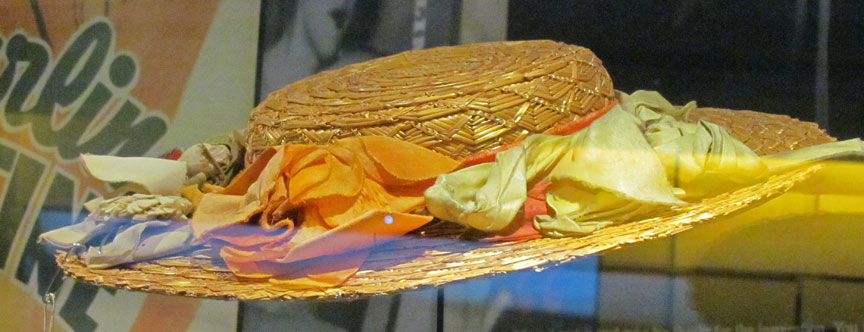
a Minnie Pearl hat
The Grand Ole Opry is broadcast live on WSM-AM at 7 p.m. Central Time on
Saturday nights. A similar program, the Friday Night Opry, airs live on Friday
nights. From March through December, the Tuesday Night Opry is also aired live.
A Wednesday Night Opry program was scheduled to debut in summer, 2010, but those
plans were abandoned after the 2010 flooding.
The Opry can also be heard live on Willie's Roadhouse (XM Satellite Radio
channel 56, and Sirius channel 64). A condensed radio program, America's Opry
Weekend, is syndicated to stations around the United States. The program is also
streamed on WSM's website.
PBS televised live performances from 1978 to 1981. In 1985, The Nashville
Network began airing an edited half-hour version of the program as Grand Ole
Opry Live; the show moved to Country Music Television and CMT Canada in 2001
(expanding to an hour in the process), and then to the Great American Country (GAC)
cable network in 2003. The television version on GAC (Opry Live on Saturdays) is
currently on hiatus.

Hee Haw stage scenery
Being made a member of the Grand Ole Opry, country music's big house, the
oldest, most enduring "hall of fame," is to be identified as a member of the
elite of country music. In many ways, the artists and repertoire of the Opry
defined American country music. Hundreds of performers have entertained as cast
members through the years, including new stars, superstars and legends.
Opry membership is not only earned, but must be maintained throughout the
artist's career. After artists die, they are no longer considered standing
members of the Grand Ole Opry. However, their impact is often celebrated at
special events, such as the 50th anniversary commemorating the death of Hank
Williams in 2003, which featured performances from Hank Williams Jr. and his
grandson, Hank Williams III.
In the mid-1960s management decided to more strictly enforce the requirement
that members must perform on at least 26 shows a year to keep their membership
active. This imposed a tremendous financial hardship on members who made much of
their income from touring and could not afford to be in or near Nashville every
other weekend. This was aggravated by the fact that the Opry's appearance fee
paid to the artist was essentially a token ($44 at the time). This requirement
has been lessened over the years, but artists offered membership are expected to
show a dedication to the Opry with frequent attendance.
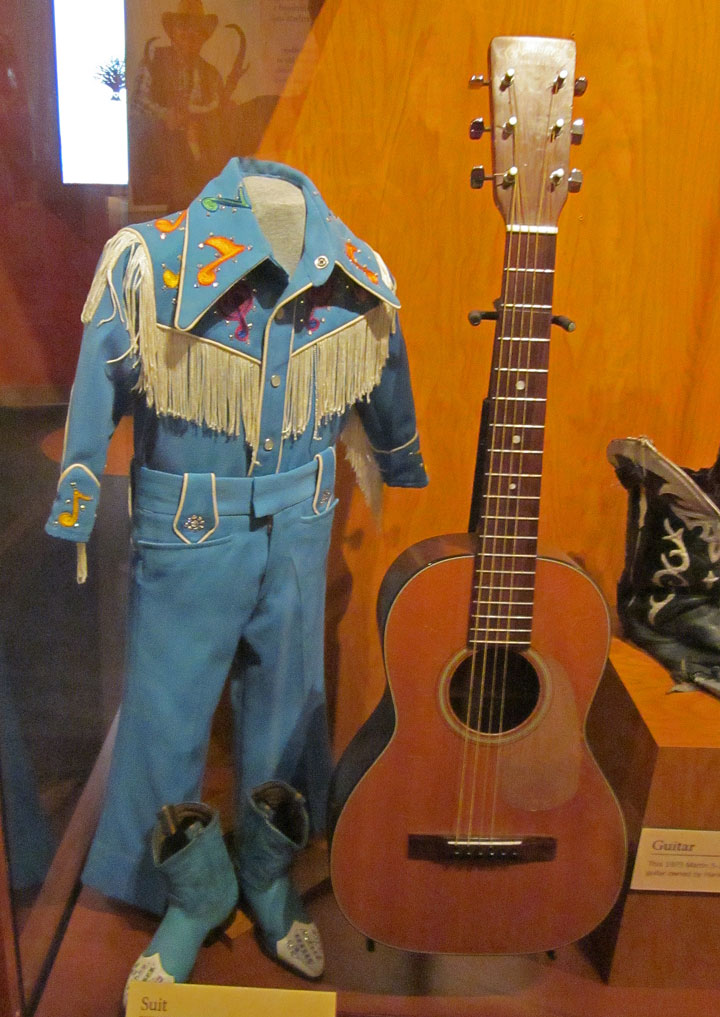
costume to start young
Another controversy that raged for years was over allowable instrumentation,
especially the use of drums and electrically amplified instruments. Some purists
were appalled at the prospect; traditionally a string bass provided the rhythm
component in country music and percussion instruments were seldom used. Electric
amplification, then new, was regarded as the province of popular music and jazz
in 1940s. Though the Opry allowed electric guitars and steel guitars by World
War II, the no-drums/horns restrictions continued. They caused a conflict when
Bob Wills and Pee Wee King defied the show's ban on drums. The restrictions
chafed many artists, such as Waylon Jennings, who were popular with the newer
and younger fans. These restrictions were largely eliminated over time,
alienating many older and traditionalist fans, but probably saving the Opry
long-term as a viable ongoing enterprise.
Management has been very conscious of the need to enforce its trademark on the
name "Grand Ole Opry" and limit use to members of the Opry and products
associated with or licensed by it. However, it lost a legal case against the
owners of a small, now-defunct Nashville record label calling itself Opry
Records. The record company's attorneys successfully argued that WSM's
management indeed owned the rights to the words Grand Ole Opry, but only in that
order and combination, but no more owned the word "opry" in isolation than they
owned "grand" or "ole". It allowed a plethora of small-time country music shows
to label themselves as Oprys of one sort or another; such as the Bell Witch Opry,
Carolina Opry, Ozark Opry, Current River Opry and Kentucky Opry. (Much the same
thing happened when the Coca-Cola Company failed to trademark the term "cola.")
The Grand Ole Opry has no association with any other "Opry" establishment.
In September 2004, it was announced that the Grand Ole Opry had contracted for
the first time with a "presenting sponsor" and would henceforth be known as "the
Grand Ole Opry presented by Cracker Barrel." Cracker Barrel, a long-time Opry
sponsor headquartered in nearby Lebanon, Tennessee, is a chain of country-themed
restaurants and gift shops whose market overlaps that of the Opry to a great
extent. In 2009, Humana, Inc., an insurance company headquartered in Louisville,
Kentucky, took over as the presenting sponsor of the Opry.
Text from Wikipedia